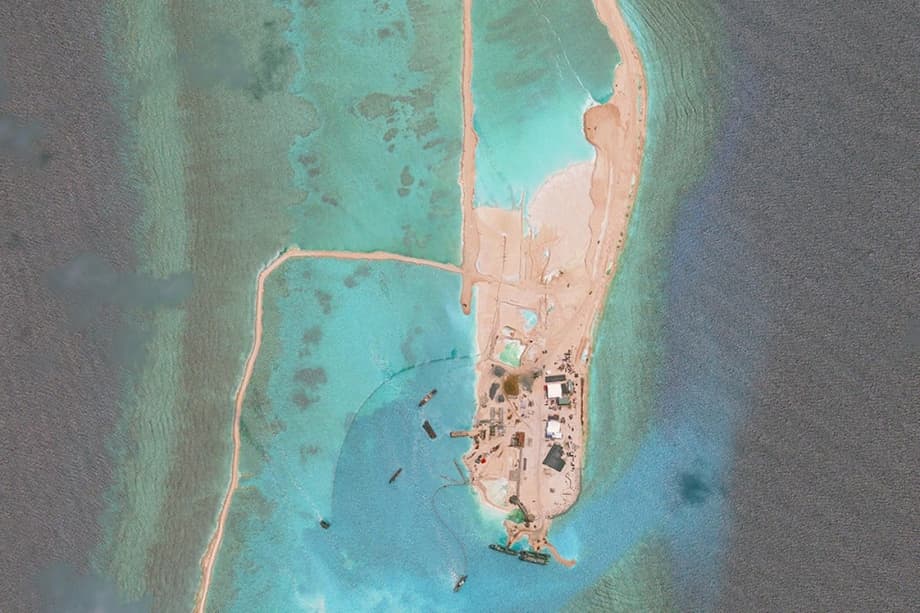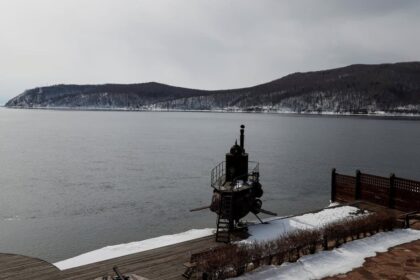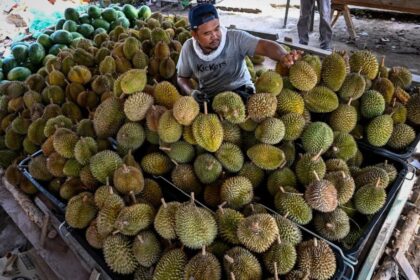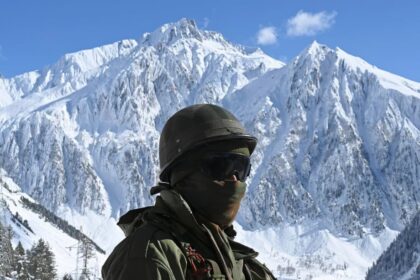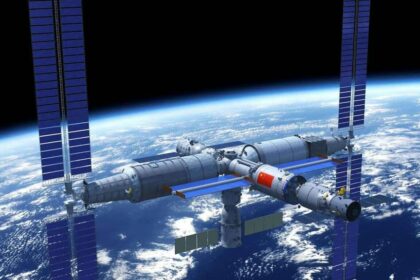Vietnam’s Rapid Expansion in the Spratly Islands
Vietnam has dramatically accelerated its island-building activities in the disputed Spratly Islands, marking a turning point in the South China Sea’s ongoing territorial contest. Recent satellite imagery and multiple think tank reports reveal that, as of early 2025, Vietnam has expanded reclamation efforts to all 21 of its occupied features in the Spratlys, transforming isolated outposts into sprawling artificial islands equipped with new infrastructure and military facilities. This surge positions Vietnam to match—and likely surpass—the scale of China’s own island-building campaign, which has dominated headlines for the past decade.
For years, China’s construction of artificial islands and military bases in the South China Sea has been a focal point of regional tension. Now, Vietnam’s rapid expansion is reshaping the strategic landscape, raising questions about the future of the disputed waters and the balance of power among Southeast Asian claimants.
What Is Driving Vietnam’s Island-Building?
Vietnam’s reclamation program is rooted in a 2007 Communist Party resolution on maritime strategy, which set out to develop the country’s coastal areas, exclusive economic zone (EEZ), and the 27 land features it occupies in the South China Sea. The goal: to bolster national security, economic development, and sovereignty claims in a region rich in oil, gas, and fisheries resources.
While Vietnam’s efforts began modestly in 2021, the pace and scale have increased dramatically since 2024. According to the Asia Maritime Transparency Initiative (AMTI) at the Center for Strategic and International Studies (CSIS), Vietnam created 692 acres of new land between November 2023 and June 2024, followed by another 641 acres in the subsequent ten months. This brings Vietnam’s total dredged and reclaimed land in the disputed South China Sea to approximately 3,319 acres—about 71 percent of China’s total reclamation in the region.
In the Spratly Islands specifically, Vietnam has created 2,236 acres of artificial land, compared to China’s 3,500 acres. However, with new reclamation underway at eight previously untouched features—including Alison Reef, Collins Reef, East Reef, Landsdowne Reef, and Petley Reef—analysts project that Vietnam will soon surpass China’s total in the Spratlys.
Transforming Outposts: From Pillboxes to Fortified Islands
Just four years ago, most Vietnamese-occupied features in the Spratlys consisted of isolated concrete pillboxes—small, fortified structures offering minimal living space and limited defensive capability. Today, all 21 of these outposts have been expanded with artificial land, creating platforms for new infrastructure and enhanced military presence.
Satellite imagery analyzed by AMTI shows that Vietnam’s expansion is not limited to land area. The country has also focused on building new harbors, logistical hubs, and storage facilities. Eight of the ten most recently expanded features are now equipped with newly dredged harbors, tripling the number of Vietnamese outposts with port facilities since 2021. This logistical upgrade allows Vietnam’s navy, coast guard, and maritime militia to operate in greater numbers and for longer periods, mirroring the year-round patrol capabilities that China has enjoyed since completing its own artificial islands.
Infrastructure upgrades are also visible in the form of munitions storage containers, administrative buildings, and, in some cases, the foundations for airstrips. Notably, Vietnam completed a new 2,400-meter (about 8,000-foot) runway at Barque Canada Reef in late 2024, joining the country’s sole existing airstrip at Spratly Island. While speculation persists about additional runways, the placement of new buildings and storage depots on other features appears to preclude the construction of full-length airstrips elsewhere for now.
Each newly expanded reef now hosts a recurring group of six buildings arranged around a central courtyard, with most islands featuring two such clusters at opposite ends. Barque Canada Reef, the largest and most developed, has multiple sets of these buildings and three munitions depots, suggesting its role as a key logistical and defensive hub.
Military and Strategic Implications
Vietnam’s island-building is not just about expanding territory—it is fundamentally altering the country’s ability to project power and defend its claims in the South China Sea. By creating larger, more defensible outposts, Vietnam is seeking to deter Chinese aggression, protect its economic interests, and ensure a permanent presence in the contested waters.
Area Denial and Defensive Posture
Unlike China’s “Big Three” fortress islands, which feature long runways and large-scale military installations, Vietnam’s strategy appears to focus on a network of smaller, mutually reinforcing outposts. This approach, known as area denial, aims to complicate or slow any adversary’s operations by dispersing defensive capabilities across multiple fortified positions. New munitions storage containers and depots have been constructed on several reefs, and analysts expect future upgrades to include anti-ship artillery, rocket systems, coastal defense emplacements, and advanced radar and sensing equipment.
However, experts caution that Vietnam’s navy and coast guard remain much smaller and less modern than China’s, limiting its ability to match Beijing’s operations ship-for-ship. As a result, Vietnam may increasingly rely on its maritime militia—civilian vessels operating in coordination with the military—to maintain a visible presence and respond to Chinese incursions.
Regional Deterrence and the Risk of Escalation
Vietnam’s expansion has not gone unnoticed by its neighbors. Malaysia, which also claims parts of the Spratlys, sent a rare diplomatic protest in October 2024 over the development of an airstrip on Barque Canada Reef. The Philippines is closely monitoring Vietnam’s activities, wary of any moves that could alter the status quo or trigger a regional arms race. In 2023, reports of Vietnam’s militarization led to protests in Manila, highlighting the delicate balance among Southeast Asian claimants.
China, for its part, has publicly denounced Vietnam’s construction, accusing Hanoi of building on “illegally occupied” territory. In February 2025, Beijing issued a rare protest over the Barque Canada airstrip, reiterating its sweeping claims to nearly the entire South China Sea. Despite these statements, China’s response has been relatively muted compared to its aggressive actions against the Philippines, possibly reflecting a desire to avoid simultaneous confrontations with multiple claimants or to preserve political ties with Hanoi.
Other claimants, such as Brunei and Indonesia, have remained largely silent, while the Association of Southeast Asian Nations (ASEAN) continues to call for restraint and the maintenance of the status quo. The United States and its allies, meanwhile, have not taken a public position on Vietnam’s expansion, though Washington has previously advocated for a freeze on all construction activities in the disputed waters.
Legal and Environmental Dimensions
The legal status of Vietnam’s reclamation is complex. In 2016, the Permanent Court of Arbitration in The Hague ruled that China’s expansive “nine-dash line” claims in the South China Sea had no basis in international law. However, the tribunal did not resolve sovereignty over individual features, leaving the door open for continued disputes and overlapping claims.
Vietnam maintains that its control of the Spratly features predates China’s reclamation and that its activities are defensive and confined to long-held outposts. Critics, however, argue that any artificial expansion—regardless of the claimant—complicates dispute management and undermines efforts to negotiate a binding Code of Conduct between ASEAN and China.
Environmental concerns are also mounting. Both China and Vietnam have engaged in large-scale dredging and landfill operations, causing significant damage to fragile coral reefs and marine ecosystems. This environmental destruction could have long-term consequences for regional fisheries and biodiversity. The Philippines, which is considering filing a new legal case against China for environmental harm, may find its position complicated by Vietnam’s similar activities. Unless Manila also targets Vietnam in its legal arguments, Beijing could accuse the Philippines of double standards, potentially weakening international support for its case.
Domestic Politics and Public Perception in Vietnam
Vietnam’s island-building campaign enjoys broad domestic support. Images of new islands and infrastructure are widely shared in Vietnamese media and on social platforms, celebrated as symbols of national strength and sovereignty. The government frames the expansion as both a defensive necessity and a contribution to economic development, in line with its long-term maritime strategy.
However, some analysts question the military effectiveness and sustainability of artificial islands. These features are vulnerable to modern missiles, saltwater corrosion, and the impacts of climate change—particularly sea level rise. Both China and Vietnam may need to continually reinforce and elevate their islands, increasing costs and environmental damage over time.
Broader Implications for the South China Sea
Vietnam’s surge in island-building is reshaping the strategic calculus in the South China Sea. By physically consolidating its claims and enhancing its military presence, Hanoi is signaling its determination to defend its interests against both Chinese encroachment and regional rivals. This expansion could trigger a new phase of competition, with other claimants considering their own upgrades or seeking new diplomatic arrangements to manage tensions.
For China, Vietnam’s actions represent a direct challenge to its dominance in the Spratlys. While Beijing’s artificial islands remain larger and more heavily fortified, Vietnam’s network of smaller, well-defended outposts could complicate any future attempts to assert control by force. The risk of escalation remains, especially as both countries seek to avoid appearing weak in the face of external pressure.
For the United States and its allies, Vietnam’s growing capabilities present both opportunities and risks. A more militarily capable Vietnam could serve as a counterbalance to China, but increased militarization also raises the stakes of any confrontation. The future of the South China Sea will depend on the actions of all parties—claimant states, major powers, and regional organizations—over the coming years.
In Summary
- Vietnam has rapidly expanded its island-building in the Spratly Islands, now poised to match or surpass China’s scale of reclamation.
- All 21 Vietnamese-occupied features in the Spratlys have been transformed from isolated pillboxes into artificial islands with new infrastructure and military facilities.
- Vietnam’s expansion focuses on building harbors, logistical hubs, and defensive outposts, with a new runway completed at Barque Canada Reef.
- The campaign is driven by national security, economic, and sovereignty goals, and enjoys strong domestic support.
- China has protested Vietnam’s activities but has responded less aggressively than to similar moves by the Philippines.
- Vietnam’s actions could trigger a new phase of competition and militarization in the South China Sea, with significant legal, environmental, and strategic implications for the region.


